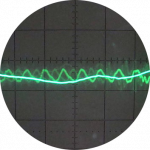Daikin Altherma Heating Controls using Onecta Integration via Home Assistant
Ok so likely not setting the world on fire here for revolutionary controls but it may help some, especially here in the UK, where Octopus are installing a lot of these Dainkin units.
so they have 2 modes, LWT which runs and balances temps of a heat curve and ignores internal temps. It’s very efficient but doesn’t balance internal comfort without a lot of tinkering.
Then Madoka mode that uses the internal thermostat and constantly messes about with the heat pump, is not great at efficiency but does do comfort well.
So, behold. LWT with some internal reference for the best of both.
\
alias: Heat Pump - Adjust Heat Curve Offset based on Room Temp
triggers:
- minutes: /30
trigger: time_pattern
conditions: - condition: numeric_state
entity_id: sensor.altherma_heat_pump_climatecontrol_room_temperature
above: 0
actions: - variables:
room_temp: >
{{ states(‘sensor.altherma_heat_pump_climatecontrol_room_temperature’) |
float(21) }}
current_counter: |
{{ states(‘input_number.heat_curve_offset_counter’) | float(0) }} - choose:
- conditions:
- condition: numeric_state
entity_id: sensor.altherma_heat_pump_climatecontrol_room_temperature
above: 21.5 - condition: numeric_state
entity_id: sensor.altherma_heat_pump_climatecontrol_leaving_water_temperature
above: 30
sequence: - variables:
new_value: |
{% set next = current_counter - 1 %} {% if next < -5 %}
-5
{% else %}
{{ next | int }}
{% endif %} - target:
entity_id: input_number.heat_curve_offset_counter
data:
value: “{{ new_value }}”
action: input_number.set_value
- condition: numeric_state
- conditions:
- condition: numeric_state
entity_id: sensor.altherma_heat_pump_climatecontrol_room_temperature
below: 20.5
sequence: - variables:
new_value: |
{% set next = current_counter + 1 %} {% if next > 5 %}
5
{% else %}
{{ next | int }}
{% endif %} - target:
entity_id: input_number.heat_curve_offset_counter
data:
value: “{{ new_value }}”
action: input_number.set_value
- condition: numeric_state
- conditions:
- condition: numeric_state
entity_id: sensor.altherma_heat_pump_climatecontrol_room_temperature
above: 20.5 - condition: numeric_state
entity_id: sensor.altherma_heat_pump_climatecontrol_room_temperature
below: 21.5
sequence: - target:
entity_id: input_number.heat_curve_offset_counter
data:
value: 0
action: input_number.set_value
- condition: numeric_state
- conditions:
- target:
entity_id: climate.heating_leaving_water_offset
data:
temperature: “{{ states(‘input_number.heat_curve_offset_counter’) | int }}”
action: climate.set_temperature
mode: single
\\
This automation will reference the internal thermostat every 30 minutes and then tweak the flow temperature by 1 up or down to help keep the room temp within the ideal mark of 20.5 and 21.5 degrees C.
Its max adjustment is +/- 5 to the flow temperature.
It also needs a helper to track that adjustment value which you can drop into your configuration.yaml
\
input_number:
heat_curve_offset_counter:
name: Heat Curve Offset Counter
min: -5
max: 5
step: 1
mode: box
initial: 0
\\
This has been keeping my house warm now for a good few weeks and stopping the house over heating whilst keeping the heat pump running slow and steady. Give it a look if you’re interested.
- 26 Forums
- 2,364 Topics
- 53.6 K Posts
- 199 Online
- 6,027 Members
Join Us!
Worth Watching
Latest Posts
-

RE: New Fogstar 15.5kWh upright solution
Inverters can pick up cell voltages and the overall bat...
By Transparent , 31 seconds ago
-
RE: My Powerwall 3 Consumes 3-4 kWh/Day in Self-Consumption: Is This Normal?
@editor Thank you so much for looking into this for me ...
By Caron , 18 minutes ago
-
RE: External pipework insulation
@transparent been in the heating industry f...
By David Smith , 21 minutes ago
-

Thanks, @downfield. I'll take a look at the Zemismart m...
By Majordennisbloodnok , 29 minutes ago
-
RE: Mitsubishi Ecodan R290 10kW performance
I have the CN105 'dongle' connected to my system, which...
By Sheriff Fatman , 52 minutes ago
-
RE: Solis S6-EH1P8K-L-PLUS – Why I Chose It and What I’ve Learned So Far
I've been looking at the S6-EH1P8K-L-PLUS, but put off ...
By energy9165 , 58 minutes ago
-
RE: Speedcomfort radiator fans
Too expensive IMHO for a whole house, at this point do ...
By JamesPa , 1 hour ago
-

RE: Say hello and introduce yourself
@velcro welcome to the forums. Please feel free start a...
By Mars , 14 hours ago
-
Daikin EDLA11D3V3 DHW Settings
I have a newly installed EDLA11D3V3 which I'm still get...
By Velcro , 15 hours ago
-

RE: Setback savings - fact or fiction?
Will come back to the above points, but for now, I've j...
By cathodeRay , 15 hours ago
-

@jamespa I have found that it comes as a shock when we ...
By Toodles , 16 hours ago
-

RE: Need Help Optimising My Rushed ECO4 Install: 12kW Bosch Heat Pump
Hi @mickamills . Welcome to the forum. It sounds like...
By bontwoody , 18 hours ago
-
RE: Midea ASHP – how to set weather compensation
@curlykatie did you get sorted with this?
By MickaMills , 19 hours ago
-
RE: Octopus Cosy Heat Pump Owners & Discussion Thread
The FT levels off at either the set point OR the minimu...
By AndrewJ , 2 days ago
-
RE: MyVaillant Connect Regular Disconnect
Thanks. Yes, if the time is consistently 11pm every nig...
By buckwem , 2 days ago
-
RE: Who's your electricity provider and what's your tariff?
@transparent Thanks, this helps. Could it be that St...
By Batpred , 2 days ago
-
RE: Clivet ASHPs and weather compensation
Simon did share a lot of very helpful advice. On furthe...
By ambris , 2 days ago
-



